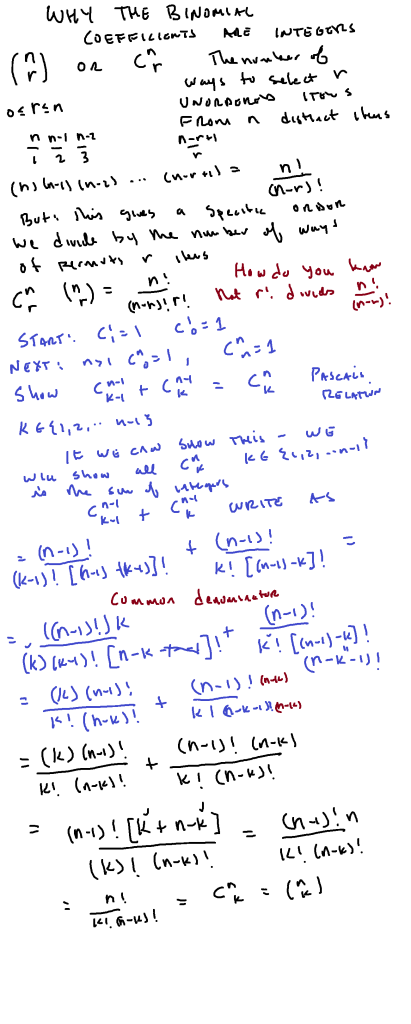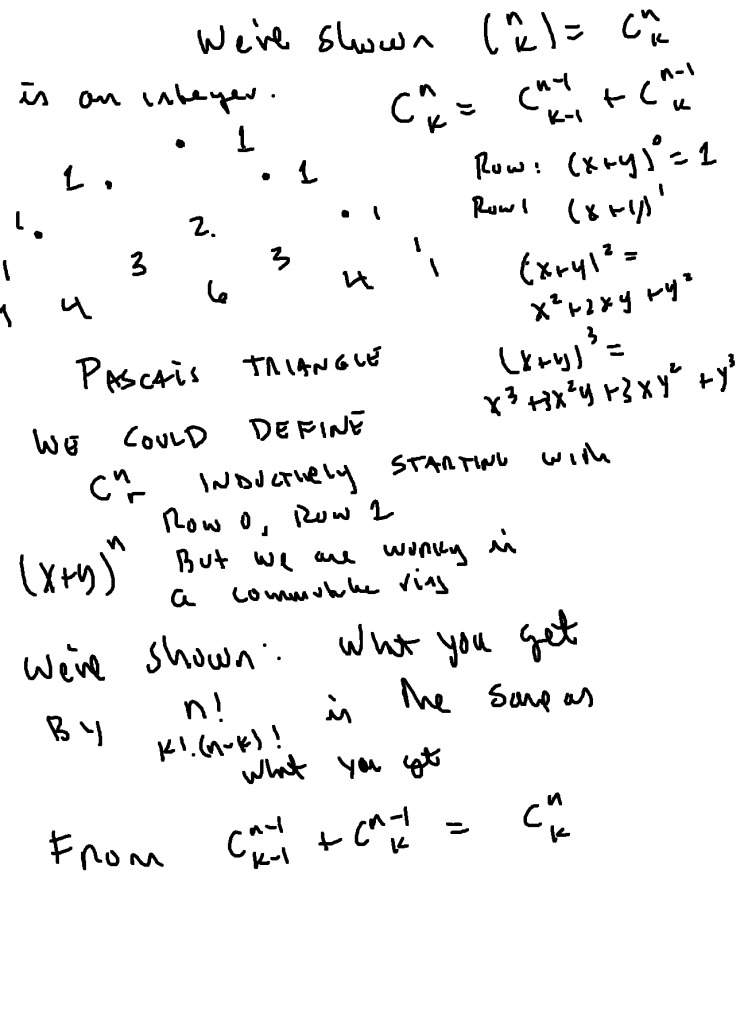The video, when ready, will be posted below.


I made a short video; no, I did NOT have “risk factor”/”age group” breakdown, but the overall point is that vaccines, while outstanding, are NOT a suit of perfect armor.
Upshot: I used this local data:

The vaccination rate of the area is slightly under 50 percent; about 80 percent for the 65 and up group. But this data doesn’t break it down among age groups so..again, this is “back of the envelope”:
or about 77 percent efficacy with respect to hospitalization, and
or 93.75 percent with respect to ending up in the ICU.
Again, the efficacy is probably better than that because of the lack of risk factor correction.
Note: the p-value for the statistical test of vaccines have no effect on hospitalization” vs. “effect” is
The video:
I saw this meme floating around:
So:
1. Assuming that are real numbers, find all
for which each relation is true, OR show why it is impossible.
2. Where appropriate, repeat exercise 1 but for, say, a field or ring.
I read yet another paper proclaiming that it is “now time to do away with p-values.” And yes, I can recommend reading the article.
From my point of view, one of the troubles with p-values is that there is a misunderstanding as to what they actually mean.
So here goes: the p-value is the probability that, given the null hypothesis is true, one obtains an observation as extreme (or greater) than the given observation. That is, if is a random variable with a probability distribution as given by the null hypothesis, and
is the observation,
.
Example: suppose you assume that a coin is fair (the null hypothesis), and you toss it 100 times and observe 65 heads. It can be shown that . So that is the p-value of that particular experiment. That is, IF the coin really were fair, you’d expect to 65 or more heads .1716 percent of the time.
That seems clear enough, statistically speaking.
But when one gets down to the science, one wants to determine whether there is evidence enough to believe one thing or another thing. So, is this coin biased or did this result happen “just by chance”? And strictly speaking, we don’t really know. For example, it could be that we did a precision scientific measurement on the coin and found it to be fair before doing the above experiment. Or it could be that this was just some coin we came across, or it could be that we were asked to examine this coin because of previous suspicious results. This information matters.
And think of it this way: suppose the above experiment was repeated, say, 100,000 times with a coin known to be fair. Then we’d expect to see the above result about 176 times and ALL of those “positives” would be “due to chance”.
Upshot: when it comes to scientific experiments, we still need replication.
The semester is about to start. I decided to have some fun on Facebook. I took some office shots (yes, my office is messy) and decided to retouch the photos by adding joke photos from Facebook; I wanted to see which friends noticed (without being specifically notified). One did.
Of course, the color alone will give away which “on the wall” photos are genuine and which were put in (via Paint).
But a fun question is: if those photos were to be genuine, what size and shape would they be in real life (to appear the way that they do in those shots). One would give the genuine dimensions of the genuine photos on the wall to help the student solve the problem.
A more sophisticated 3-d version of the problem can be obtained from this cool video:
Think back to how you introduced the sine and cosine functions on the real line. Ok, you didn’t do it quite this way, but what you did, in effect, is to define and
and then use “elementary trigonometry” to relate the “angle”
to the arc length subtended on the circle
. One notes that the map
defined by
has period

Note: the direction “to the right” on the real line is taken to be “counterclockwise” on the circle (red arrows).
Skip if you haven’t had a topology class
The top line is known as the “universal covering space” for the circle. The reason for the terminology has to do with topology. Depending on how long ago you had your topology course, you might remember that the fundamental group of the real line is trivial and the associated group of deck transformations is infinite cyclic (generated by the map ). One then shows that the fundamental group of the circle is the quotient of the group of deck transformations with the fundamental group of the real line; hence the fundamental group of the circle is infinite cylic.
Resume if you haven’t had a topology class
Notice the following: if one, say, “takes a walk” along the line in the direction of the red arrow, the action of the “covering mapping” is to take the same walk in the counter clockwise direction of the circle. That is, the covering action does the following: a walk on the line in the direction of points corresponds to a walk on the circle
. That is, walking from
to
corresponds to a complete lap of the circle.
(that is, on the real line, )
Now note the following: for BOTH the line and the circle, the direction is well defined. “To the right” on the real line” is “counter clockwise” on the circle.
However: on the real line, it makes perfect sense to say that is “before”
which is “before”
which is “before”
and so on; this is merely:
. This is order is valid no matter where one starts on the line.
However, this “universal ordering” makes no sense on the circle, UNLESS one specifies a start point. True, one moves from to
to
and back to
again..but if one started at
and started to walk, it would appear that
came AFTER
and not before.
So what?
A friend posted this to her facebook wall:
This quirky animation from CraveFX starts off innocently enough, a janitorial worker mops up a leaky refrigerator and then picks up a coin on the ground. It’s not until you see what causes the refrigerator to leak and why the coin is on the ground that you realize that you’re watching an intricate moving puzzle piece before your eyes. The characters are stuck in an infinite loop caused by another character in their own infinite loop. It’s chaotic and great and hard to keep up with.
The video is below. Now the question: “what action occurred before what other action”? and the answer is “it depends on when you started watching”. The direction of time corresponds to the red arrows in the above diagrams; THAT is well defined. Why? The reason is the Second Law of Thermodynamics; spills do NOT reverse themselves, hence the direction is set in stone, so to speak. But as far as order, it depends ON WHEN THE VIEWER STARTED WATCHING.
Anyway, this video reminded me of covering spaces.
This blog isn’t about cosmology or about arguments over religion. But it is unusual to hear “on all but a set of measure zero” in the middle of a pop-science talk: (2:40-2:50)
I have subscribed to Terence Tao’s blog.
His latest post is about a clever observation about…calculus: in particular is is about calculating:
for
. Try this yourself and surf to his post to see the “slick, 3 line proof”.
But that really isn’t the point of this post.
This is the point: I often delight in finding something “fun” and “new to me” about an established area. I thought “well, that is because I am too dumb to do the really hard stuff.” (Yes, I’ve published, but my results are not Annals of Mathematics caliber stuff. 🙂 )
But I see that even the smartest, most accomplished among us can delight in the fun, simple things.
That makes me feel better.
Side note: I haven’t published much on this blog lately, mostly because I’ve been busy updating this one. It is a blog giving notes for my undergraduate topology class. That class was time consuming, but I had the teaching time of my life. I hope that my students enjoyed it too.
My area of research, if you can say that I still have an area of research, is geometric topology. Yes, despite everything, I’ve managed to stay moderately active.
One big development in the past decade and a half is the solution to the Poincare Conjecture and the use of Ricci Flow to solve it (Perelman did the proof).
As far as what the Poincare Conjecture is about:
(If you’ve had some algebraic topology: the Poincare Conjecture says that an object that has the same algebraic information as the 3 dimensional sphere IS the three dimensional sphere, topologically speaking).
Now the proof uses Ricci Flow. Yes, to understand what Ricci flow is about, one has to understand differential geometry. BUT it you’ve had some brush with vector calculus (say, the amount that one teaches in a typical “Calculus III” course), one can get some intuition for this concept here.
Watch the video: it is fun. 🙂
Now when you get to the end, here is what is going on: instead of viewing a space (such as, say, the 2-d sphere) as being embedded in a larger space, one can talk about the space as being intrinsic; that is, not “sitting in” some ambient space. Then every point can be assigned some intrinsic curvature, and Ricci flow works in that setting.
Of course, one CAN always find a space to isometrically embed your space in (Nash embedding theorem) and still pretend that the space is embedded somewhere else; some “first course in differential topology” texts do exactly that.